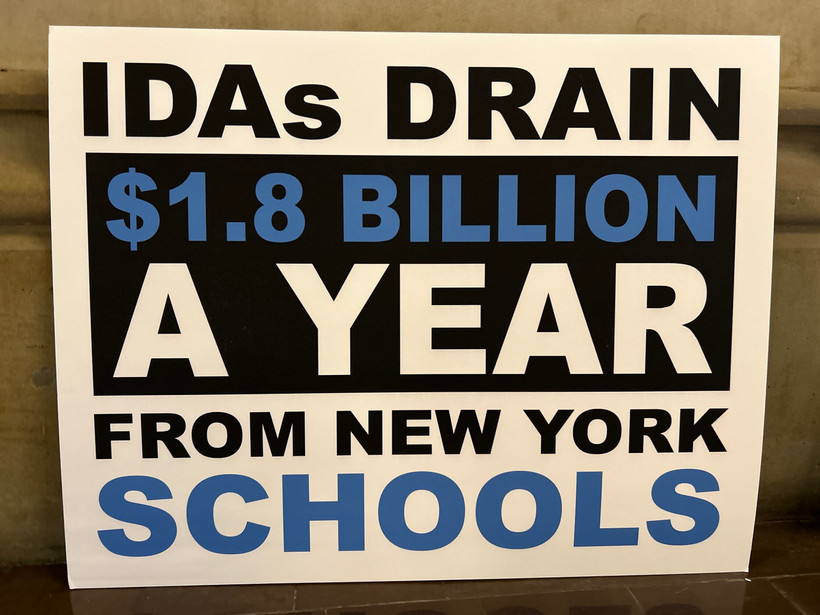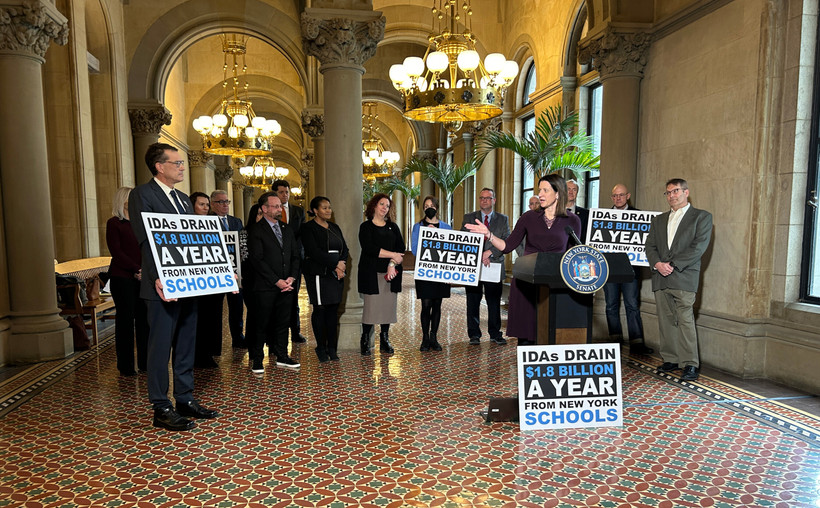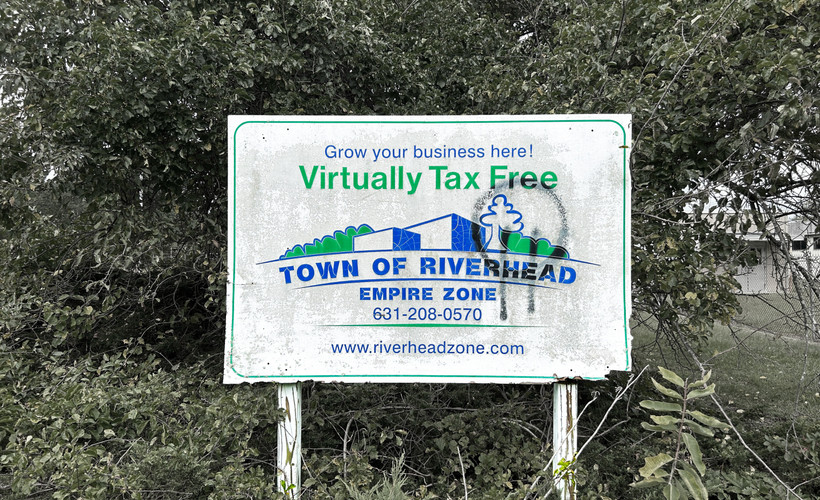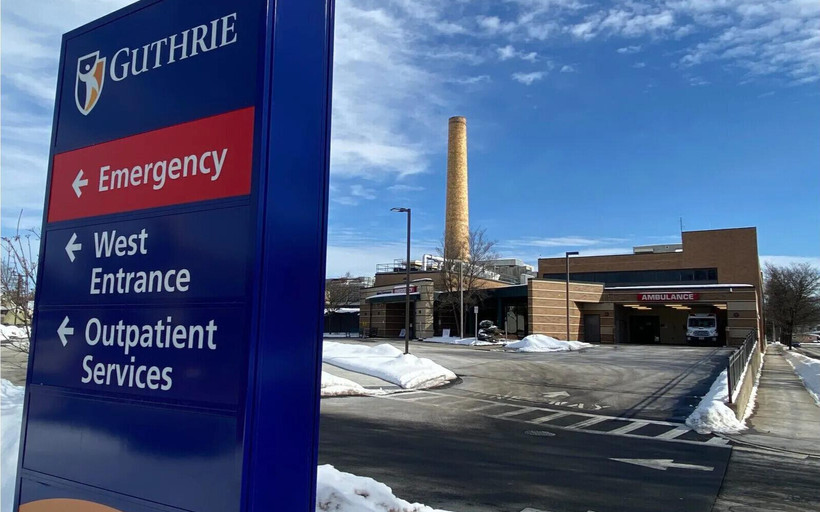Unions Join the Fight to Slash Economic Development Tax Breaks
When local authorities hand out subsidies, school budgets lose revenue. The state teachers union is now pushing back.

“It’s gonna be a clash of the titans.”

“Our school district does the best job that they can with the resources that it has, but they shouldn’t have to keep scrimping and saving.”
“It’s like being in a boxing match with one arm tied behind your back. As funding is taken out of one source, you can’t replace it.”

Before Kathy Hochul paused it, the tolling program lost the little labor support it had when the Transport Workers Union withdrew its backing this spring.
More counties are turning to private corporations to run medical care in jails. The companies have deadly track records.
Rebecca Lamorte was let go by her employer in June, prompting the Assembly Speaker to place an upset call to her boss.
Medicare Advantage plans are spreading across upstate New York, despite a reputation for denying care. In Cortland County, retirees kept it at bay.
No state pursues workers for overpaid unemployment benefits as aggressively as New York. A proposed reform is colliding with New York’s own repayment problem.
New Yorkers for Local Businesses has spent half a million dollars trying to kill a bill to help workers recover stolen wages. Almost all its backers appear to own McDonald’s franchises.
In rural school districts where doctors are hard to find, in-school telehealth services seemed like a good solution. Then New York state stopped funding them.
The mayor and the police blamed “outside agitators” for campus protests. Student journalists reported what they saw.
Long-term subs stay with the same classes and can serve like full-time teachers. New York City schools misclassify them — so their pay doesn’t reflect that.





